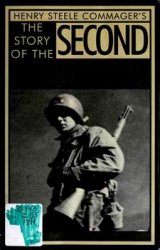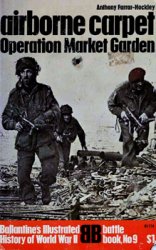Called Tories by their political opponents, Loyalist Americans refused to support independence and remained faithful to the British Crown during the Revolutionary War (1775-83). Loyalists lived in every colony. New York, Pennsylvania, and South Carolina had the largest number while New England had relatively few. However, accurately estimating the total number of Loyalists in the population is difficult. John Adams thought that one-third of the colonial population opposed independence, one-third supported independence, and one-third were neutral or indifferent. More recent estimates, suggest that a smaller number, perhaps 20 percent of the population, were Loyalists. Approximately 100,000 left the United States after the war. This amounted to between 3 percent and 4 percent of the population of the United States. Some of these people immigrated to Britain, several thousand went to the West Indies, and as many as 50,000 traveled north to Canada and Nova Scotia. Complicating these estimates are the thousands of “late Loyalists” who crossed the border into Canada in the years immediately after the war and who may or may not have had political motivation. There were also many Loyalists who eventually returned to the United States when anti-Loyalist feelings subsided.
The traditional stereotype pictured the Loyalists as officeholders or Anglican clergymen with ties to the British government (see also Anglican Church). It was commonly assumed that they shared an innate conservatism sharply in contrast with the political radicalism of the revolutionaries. Certainly, some fit that stereotype, but the Loyalists were a diverse group. Aside from a small elite, they were largely common people. Many were farmers and artisans of modest means. Among those who left the United States, a substantial number were minorities, including Aerican Americans. Also there were many
Dutch, Huguenots, and Quakers from the mid-Atlantic colonies. A large number of Loyalists were members of the Church of England, however, and at least an equal number represented other denominations, including evangelicals from groups such as the Methodists and Baptists. Many of the Loyalists came from families that had been in North America for several generations. Of the group that went to Nova Scotia, more than 90 percent were born in North America, and many left relatives in the United States.
The Revolutionary War was a civil war as well as a struggle for independence. Conflicting loyalties often divided communities, congregations, and families. The decision to remain loyal to the Crown was often a difficult one, and the reasons for it were complex. Like most political decisions, the choice was usually a function of both personal principle and self-interest. It was, above all, a decision based on local conditions. In areas where political conflicts resulted in one side depending on the Crown, loyalism was common. It was the political enemies of the people who became revolutionaries who often supported the British forces. Tenants in the Hudson River valley sought British support in their quarrels with their landlords. Backcountry farmers in South Carolina sided with the British against Whig planters and merchants in Charleston.
Loyalties during the war could often be ambiguous, and many individuals switched sides. Benedict Arnold was only the most infamous of men who decided that ultimately he would fight for the king after having first served in the Continental army. Common soldiers and sailors switched sides with an ease that defies easy categorization as either Whig or Loyalist. Soldiers deserted constantly from both armies and would join the enemy. Sailors might simply sign on to either a British or an American vessel as suited their needs. One common seamen changed sides at least 10 times. Ideology seems to have had little impact on many of these decisions, which were driven as much by personal interest—and an enlistment bounty—as anything else.
Although loyalism presupposed no particular political creed, ideas were important for many Loyalists. Studies of Loyalist political thought indicate that a variety of political opinions were common among Loyalists both during the Revolution and in exile. Loyalists and revolutionaries were often united in their opposition to British policies. But the Loyalists rejected the solution of independence, feeling strongly that their rights would be most secure within the British Empire. They believed that the biggest threat to liberty and property did not come from the king but from unruly mobs and extralegal committees that seemed more interested in riot, disorder, and their own interest than the public good. Many Loyalists actively argued their cause by speaking out and writing articles. While they did not rise as a group to support Britain, a substantial number eventually volunteered to fight alongside the British in Loyalist regiments or in guerrilla groups. Some performed other duties for the occupation forces. However, the majority of Loyalists simply attempted to survive and hold on to their homes. Most Loyalists remained in the United States after the war and quietly rejoined the general population.
Of those who left the United States, some did so on the basis of a conscious decision while others had no choice. Both the Second Continental Congress and the state assemblies approved repressive measures against the Loyalists. In most areas, Loyalist property was confiscated and Loyalists often were subject to violence by their neighbors. Some were tortured and killed. They were usually barred from political activity. During the war, large numbers of Loyalists lived under the protection of British forces in New York and Charleston. In 1783 when the war ended they had little choice but to leave with the retreating British.
Of the 50,000 Loyalists who went to what is today Canada, about 32,000 went to Nova Scotia. The remainder went to Quebec; most of these people moved to the unsettled lands north of Lake Ontario. In the Treaty of Paris (1783) the United States agreed in principle to compensate the Loyalists for lost and confiscated property. That agreement was never honored. The British provided some compensation for wartime losses, but fewer than 10 percent of the refugees owned enough property before the war to justify filing a claim with the Loyalist Claims Commission. Although Loyalists were eligible for land grants, in most cases they were a poor substitute for what they had lost. In contrast with civilian refugees, Loyalist troops or provincials had the added incentive of staying with trusted leaders and units. In many cases they also enjoyed the benefit of retirement on half-pay.
For the Loyalists, being on the losing side of the war was a bitter experience, particularly for those who went into exile. Many had lost much of what they owned and were forced to start over in mid-life and in difficult circumstances. However, most of the refugees persisted and eventually exerted a powerful influence on the colonies that received them. The modern nation of Canada may be considered as much a product of the Revolutionary War as was the United States. Two of the four colonies that united to form the Dominion of Canada in 1867, New Brunswick and Canada West (present-day Ontario), were created specifically for the Loyalists. In the other two, Nova Scotia and Canada East (present-day Quebec), the Loyalists exerted a substantial influence. While often overlooked or vilified in U. S. history, the Loyalist tradition came to play an important role in the development of Canadian political culture.
Further reading: Bernard Bailyn, The Ordeal of Thomas Hutchinson (Cambridge, Mass.: Harvard University Press, 1974); Wallace Brown, The Good Americans: The Loyalists in the American Revolution (New York: William Morrow,
1969);--, The King's Friends: The Composition and
Motives of the American Loyalist Claimants (Providence, R. I.: Brown University Press, 1965); William H. Nelson, The American Tory (New York: Beacon Press, 1961); Mary Beth Norton, The British Americans: The Loyalist Exiles in England, 1774-1789 (Boston: Little Brown, 1972); Janice Potter-MacKinnon, The Liberty We Seek: Loyalist Ideology in Colonial New York and Massachusetts (Cambridge, Mass.: Harvard University Press, 1983); Paul H. Smith, Loyalists and Redcoats: A Study in British Revolutionary Policy (Chapel Hill: University of North Carolina Press, 1964).
—Robert Lively




 World History
World History









